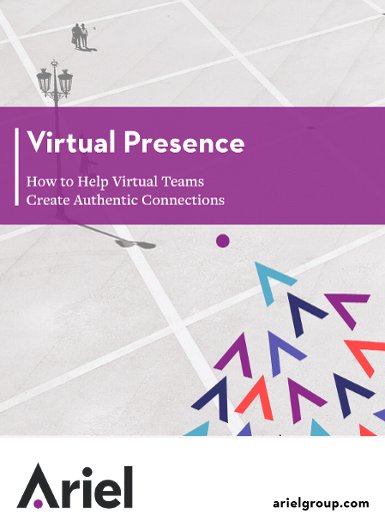The Accidental Hairy Eyeball & Other Personal Presence Dangers

By now, many of us are fairly competent at “looking lively” when we make a presentation, speak to a senior executive, or meet a client. Firm handshake, check. Eye contact, check. Good posture, check. But what happens once your part of the presentation is over and you are no longer the focal point of the meeting?
Many leaders and managers are conscious of their personal presence when they are presenting or speaking 1 to 1 but may be unaware of how their personal presence impacts co-workers and direct reports when they are “off-stage.”
We all know about non-verbal communication and how important it is. There have been studies. Blogs. Trainings. Maybe like me, your grandfather gave you Nice Girls Don’t Get the Corner Office when you graduated college and you underlined the suggestions about looking people in the eye and not sitting on your foot in meetings.
By now, many of us are fairly competent at “looking lively” when we make a presentation, speak to a senior executive, or meet a client. Firm handshake, check. Eye contact, check. Good posture, check. But what happens once your part of the presentation is over and you are no longer the focal point of the meeting? Do you remain, as we say here at The Ariel Group, ‘high-presence’?
One of my personal challenges is unintentionally giving people the hairy eyeball when I’m listening intently or spacing out. Because this is something I’m aware of, I try to maintain what I call my “encouraging listening face” unless I specifically want to send a different message.
If you’ve taken our Personal Presence class, it’s related to the “Passionate Purpose” exercise: just as you want your audience to feel or react a certain way when you’re speaking, you should have a passionate purpose for how you want the speaker and others in the room to feel when you are not speaking. If you aren’t at least aware of your “off-stage” personal presence, you may be unintentionally making a bold statement.
Here are some examples:
- Example 1: A new manager is presenting some data to a meeting full of senior executives. While many of the executives nod in encouragement, one fidgets in his chair and repeatedly checks his watch.
The effect: The new manager thinks a) Oh gosh I’m boring/didn’t do a good job b) I must be running overtime c) What a jerk!
- Example 2: A senior executive is delivering some important news to a conference room full of staff. Most people are listening intently but one is slouched in her chair with her cheek in her hand and looking out the window.
The effect: The executive thinks a) This is important news—doesn’t this person care about her job or the company? b) Oh gosh I’m boring c) What a jerk!
In reality, the watch checker and the window-watcher might both be engaged in the information being presented to them—and even if they aren’t they’d probably not want the speaker to know that.
The bottom line: Nobody’s perfect but think about checking in with yourself from time to time to see what kind of messages you’re sending with your “off-stage” presence.
